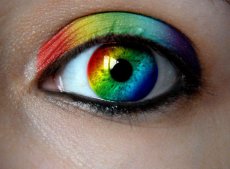Men and women see the world differently
Last reviewed: 16.10.2021

All iLive content is medically reviewed or fact checked to ensure as much factual accuracy as possible.
We have strict sourcing guidelines and only link to reputable media sites, academic research institutions and, whenever possible, medically peer reviewed studies. Note that the numbers in parentheses ([1], [2], etc.) are clickable links to these studies.
If you feel that any of our content is inaccurate, out-of-date, or otherwise questionable, please select it and press Ctrl + Enter.

Researchers from the Brooklyn College of New York City University found that the visual centers of men and women work differently. The results of their research are set out in the online magazine BioMed Central.
We look at the world in different ways. As shown by the study of specialists, men and women have significant differences in the perception of colors by the brain.
Representatives of the male half of humanity have a greater ability to notice details and to distinguish between rapidly moving stimuli, and women are better able to distinguish colors.
In the brain, especially in the visual cortex, there is a high concentration of receptors of male sex hormones - androgens, which are responsible for image processing. Also, androgens control the development of neurons during embryogenesis. This means that men have 25% more of these neurons than those of the weaker sex.
To conduct research, experts selected men and women over 16 who had visual acuity and normal color perception.
It turned out that it is not easy for men to distinguish between colors in the middle of the visible spectrum, for example, shades of blue, green and yellow.
The color perception of men is slightly shifted and in order to determine the shade, they need a longer wave. That is, women can distinguish less pronounced and rich colors. For example, an object of turquoise color is identified by a woman at once, and in order for a man to understand what kind of shade, it is necessary that the object be slightly bluer.
To analyze the degree of contrast sensitivity, scientists used images of light and dark bands. They were vertical and horizontal. The participants of the experiment were to designate the visible ones. Strip alternation created a flicker effect.
When changing the location of the bands relative to each other, the subjects lost sensitivity when the bands were located near and re-acquired when the distance between the bands increased.
"The person has similar gender differences, which we observe in the case of smell, hearing and other feelings. We think that the main role here is played by testosterone, which affects the ability of the brain to perceive and process information obtained with the help of vision, "says the lead author of the study, Professor Israel Abramov.
